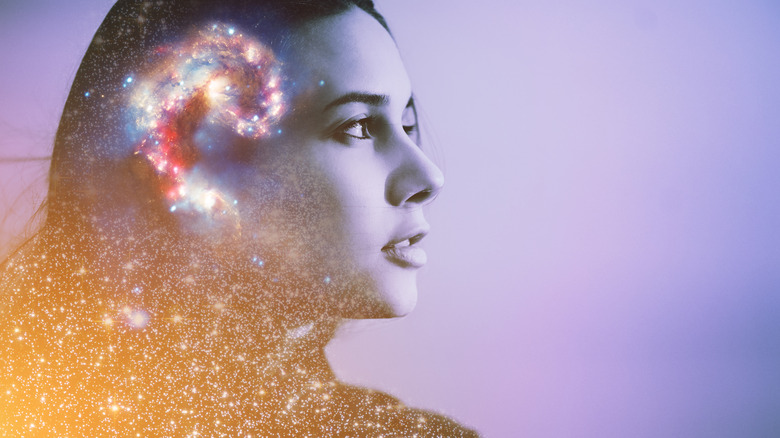Why Making Art Is A Great Activity For Brain Health
As children, whether in school, at camp, or at home, it's likely a part of our days were dedicated to arts and crafts time. Many of us may have fond memories of sequins and pipe cleaners, of paint, glitter, and glue. But as it turns out, forgoing arts and crafts for more "adult" lessons and activities and pursuits in our adult lives may not have been the best idea. In fact, if you are someone who has picked that paint brush back up, or has bought colored pencils and a coloring book for yourself, or if you've started making jewelry or throwing pottery or carving sculpture, you've likely already discovered what science is now backing up: it feels like it's good for your mental wellbeing. That's because it is (via The Healing Power of Art).
And not just your mental health, but the actual functioning of your brain, which runs all other bodily functions, actually improves through the creation of art. In fact, a major study at Columbia University showed that complex subjects like math, science, and language rely on complex cognitive abilities that are, according to the study, "typical of arts learning." So anyone who ever told you that math and science were "real" subjects and you didn't "need art," were deeply and sadly mistaken. Learning art can actually help you learn these other disciplines.
How making art heals and inspires
Why does making art, whether doodling, sculpting, or writing a song feel so good? According to Christine Strang, a professor of neuroscience at The University of Alabama Birmingham and former president of the American Art Therapy Association, "Creativity in and of itself is important for remaining healthy, remaining connected to yourself and connected to the world" (via NPR). So if scribbling or coloring in between work tasks helps you feel calmer, clearer-headed, and more focused, you are far from alone.
Girija Kaimal, a professor at Drexel University who leads art therapy for members of the military who have sustained traumatic brain injuries, says that "Anything that engages your creative mind — the ability to make connections between unrelated things and imagine new ways to communicate — is good for you" (via NPR).
The reason art may be so helpful for both our ability to think through complex problems and also for keeping a more positive outlook is because it engages our imagination. As Kaimal explains, our brains use "information to make predictions about we might do next — and more importantly what we need to do next to survive and thrive." So when you make art, no matter what type of art it might be, you are making a series of decisions, and you are using your imagination to do that.
"This act of imagination is actually an act of survival ... It is preparing us to imagine possibilities and hopefully survive those possibilities," said Kaimal.

